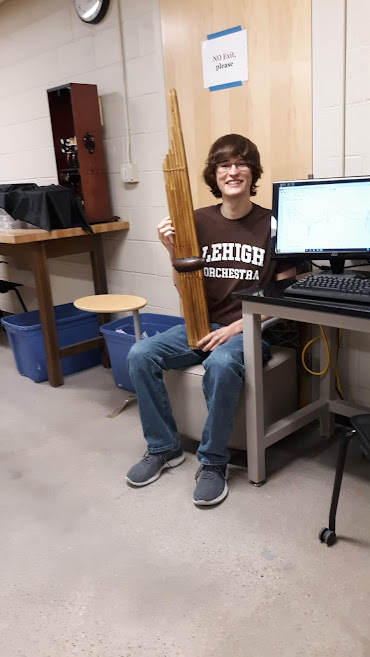The National Science Foundation's Research Experiences for Undergraduates (REU) program supports undergraduate students' active participation in ongoing research efforts supported by the NSF or projects designed specifically for the REU program.
Undergraduates Philip Kaufinger '22 (music/mechanical engineering), Sophia Martino '24 (computer engineering), and Josephine Koelsch '23 (Integrated Degree in Engineering, Arts & Sciences) were among the Lehigh students who took part in research projects conducted by various REU Sites over the summer of 2021.
The students worked with Lehigh's Office of Fellowship Advising to secure these highly sought after opportunities (which come with stipends and, in many cases, assistance with housing and travel) to conduct research working side by side with faculty and other researchers in a group setting, or remotely because of pandemic-related constraints.
Read more about their experiences below.
 Where was your REU site and who did you work with?
Where was your REU site and who did you work with?
My REU site was Coe College in Cedar Rapids, Iowa. I worked with Professor James Cottingham.
What was the focus of your research project and what was your specific role?
The project was based entirely around musical acoustics and almost everything was conducted using the finite element program known as COMSOL. The purpose of the project was to examine and model free reed musical instruments. This classification pertains to instruments such as accordions and organs. My primary job was to examine the Asian instrument known as the Khaen. I spend my days divided between two primary tasks. First, I am attempting to simulate accurate reed motion of the instrument using a turbulent flow computational fluid dynamics model. Secondly, I am attempting to correctly determine the input impedance for the pipe/reed system which shows the acoustic response of the instrument for a given range of frequencies. The ultimate goal is to be able to make a complete simulation of a Khaen pipe and then a full Khaen that accurately matches the real instrument.
What challenges did you face?
What did you take away from the experience?
There wasn't much crossover between what I currently am studying at Lehigh and this REU. This REU was acoustics based and I am pursuing degrees in both mechanical engineering and music. However, as I aspire to pursue a career in musical acoustics, this experience will prove invaluable. I foresee applying most knowledge gained during this REU to my graduate studies and my career in acoustics.
Where was your REU site and who did you work with?
This summer, I worked at Temple University's Pervasive Computing REU site and I worked with Temple professor Dr. Yan Wang, Temple graduate student Tianming Zhao, and Rochester Institute of Technology student Keegan Kresge.
What was the focus of your research project and what was your specific role?
The focus of our research project was to use the Channel State Information (CSI) from WiFi signals to learn about the path of WiFi signals to recognize gestures. We also worked to develop a deep learning model to perform the gesture recognition. My role consisted of developing and running gesture experiments and helping to develop our gesture recognition algorithm using deep learning. We also wrote a paper that was accepted by the REUNS 2021 conference.
What challenges did you face?
What did you take away from the experience?
I learned a lot about persistence through uncertainty. Many of our experiments were exploratory to understand the nature of the CSI of the WiFi signals. We spend a lot of time trying to understand our data and find meaningful patterns. Additionally, organization was a huge part of our success this summer; organization of time, our data, procedures and code. I will take these skills into my next three years at Lehigh.
Photo (from left): Tianming Zhao, Sophia Martino '24, Keegan Kresge, and Dr. Yan Wang
Where was your REU site and who did you work with?
I participated in the Socially Relevant Computing and Analytics (SRCA) REU hosted by North Carolina State University, but I conducted all my work remotely from my home in Maryland. I worked with Dr. Arnav Jhala through his Automated Reasoning for Narratives And Visuals (ARNAV) Lab.
What was the focus of your research project and what was your specific role?
I had the unique opportunity of choosing a topic to study within my advisor’s research on narrative and comic books. My partner and I chose to study the impact of color saturation on eye gaze and object recall in comic book panels. Since my team was creating this project from the ground up, I was involved in our study design and in coding our user interface to conduct our pilot study.
What challenges did you face?
What did you take away from the experience?
The takeaways that I will bring back to my work at Lehigh include a more thorough understanding of formal scientific research as well as a renewed interest in exploring the intersection between art and technology. Comic books and computer science are an unusual combination, but that type of interdisciplinary work is something I will strive to pursue at Lehigh and in the future.
